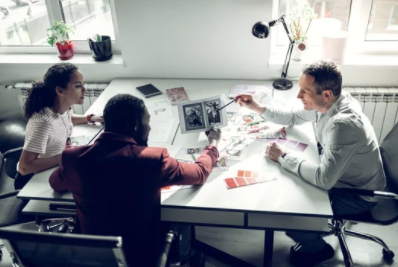

Women’s, men’s, and children’s clothing are designed by fashion designers. Sportswear, maternity clothing, outerwear, undergarments, formalwear or eyeglasses, and footwear are examples. Scarves, belts, wallets, and hosiery are all designed by accessory designers. Fashion designers may be found at all levels of the industry, from well-known couturiers to obscure fashion designers working for ready-to-wear businesses to fashion stylists who may just make minor adjustments to current designs. Fashion designers use marketing and advertising to promote themselves. Some designers promote their collections both on the runway and in their own retail outlets. In order to broaden their brand identification, some people give their names to other licenced items. In truth, many famous fashion designers only develop a small portion of the collections that bear their names.
Fashion designers are now using new technologies such as body scanning for a better bespoke fit and seamless knitting technologies that can make apparel at the touch of a button. New technology, resources, and tools will transform the face of fashion in the future, much as the sewing machine did in the past.
Fashion investors are scrutinising and deciding which businesses to invest in with telescopes. It’s critical to keep the investor’s interests in mind while presenting your brand to potential investors.
“There are too many of the same beauty companies, and they can’t all be successful,” says Gail Zauder, managing partner of strategy consultancy Elixir Advisors. “I believe this will be an Ice Age when only the individuals who deserve to survive will get funding.” Unfortunately, this is correct! The pandemic-induced alterations have resulted in the ice age comparison.
JD Institute Of Fashion Technology, which reflects a record-breaking placement of 99% is here with crucial points to remember before you pitch your ideas of fashion to an investor. Let’s start by looking at what has changed in the fashion industry and why.
“Pan-de-miiic,” sing it with me in Elsa Majimbos voice. Large gatherings are prohibited by the lockdowns. This meant no weekend parties, Sunday trips, long commutes to work, or vacations! Asoebi’s popularity waned, and with it, the need for high-end outdoor clothing. In our stay-at-home casual and lounge gear, we were left at home, complete with matching uggs. Uggs, on the other hand, are those delightfully ugly slip-ones that are, well, uggs.
Sneakers have replaced office pumps for fast shopping runs, and tops have become another requirement. Face masks have evolved into a kind of identification for entering physical establishments and workplaces. Stores that turned digital and provided home delivery were increasingly popular. As the number of individuals staying at home grew, so did their desire to be more physically active, necessitating the use of activewear.
Despite the fact that firms are in decline, both buyers and investors want profitability or affordability. While shoppers want high-quality items at reasonable rates, investors want fashion businesses that can solve problems with minimal financial commitment while creating a significant return.
According to an article published by the business of fashion, fashion investors are prepared to financially back enterprises that cater to the finances, health, and reusability of shoppers. Georgia Dant of Burberry and Rag & Bone produced a reversible garment for Marfa Stance, a new fashion company founded by Burberry and Rag & Bone graduate Georgia Dant. This implies double style in one piece, and investors are banking on it because of their ingenuity and commitment to sustainability.
Finally, Richard Klin, a London real estate developer who just invested in Marfa, stated, “I wouldn’t be interested if someone related to fashion came to me 30 years back,” but “if a brand projects a clear story, problem-solving vision or vision towards the digital world, I see a market for it.”
Allow me to add that he would be willing to put money into it because it has the potential to pay off. The brand also fulfils a requirement and solves an issue. This is what a fashion business should strive to accomplish: satisfy a demand, solve a problem, and digitally service a ready market.
How to become a fashion designer or get a decent fashion designer salary? The right kind of training or education is the answer. JD Institute Of Fashion technology is one of the best institutes in the field of art or creativity. They have various industry-based courses such as fashion designing courses etc. JD Institute shares a vision of providing the best resources or infrastructure etc, so that no external factor acts as a barrier in the journey towards success for their students. Due to their exceptional approach towards education or record-breaking placement of 99% through which its students are working for top organizations such as Zara, Sabyasachi, etc and are making a name for themselves in their respective industries, they have won several awards such as international glory award, the times power icon award, etc. the admission process involves a GAT or general aptitude test which is created carefully to analyse the artistic skills of the candidates. It is followed by a personal interview. Enroll now for a brighter future!